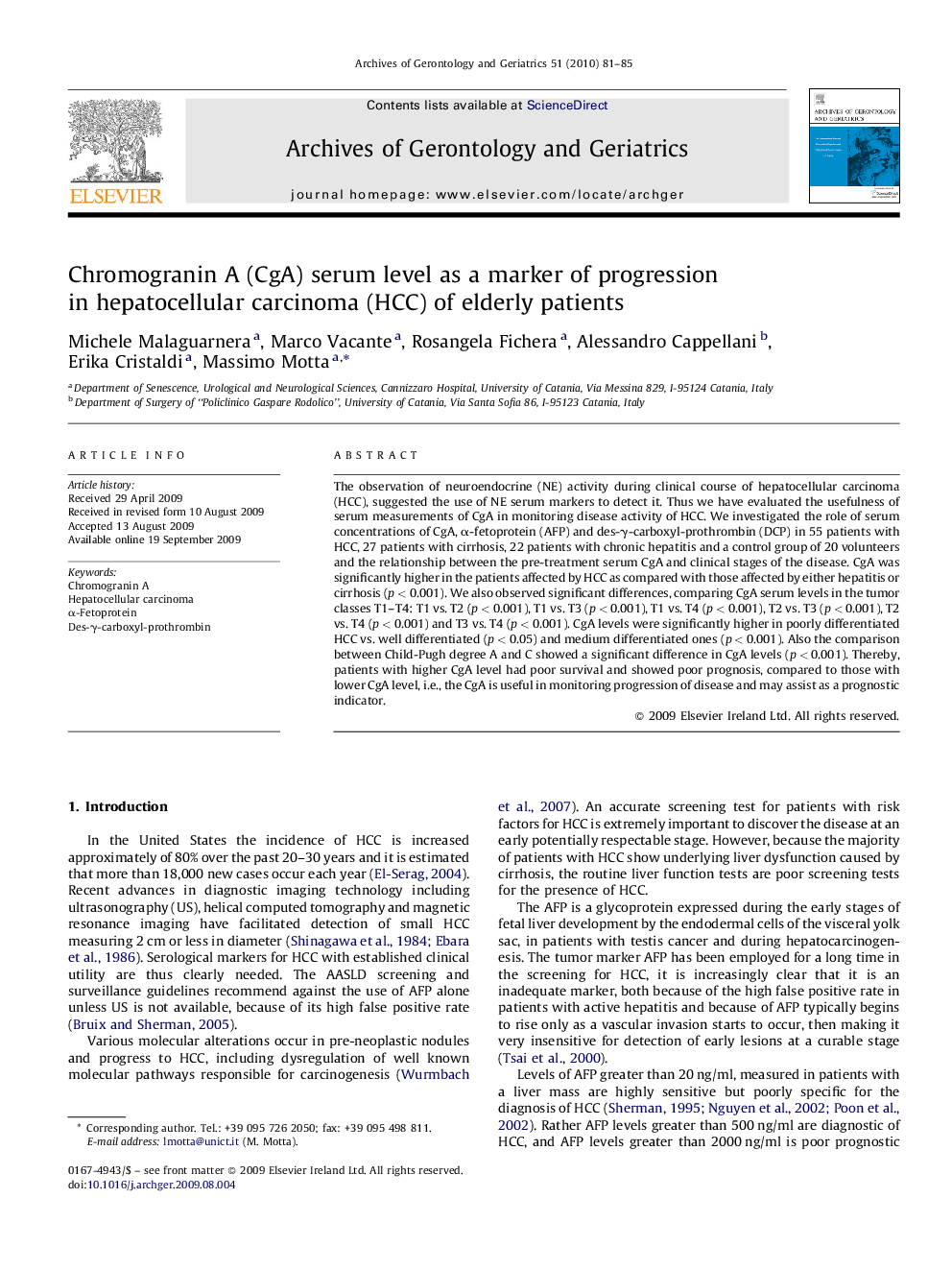| Article ID | Journal | Published Year | Pages | File Type |
|---|---|---|---|---|
| 1903330 | Archives of Gerontology and Geriatrics | 2010 | 5 Pages |
The observation of neuroendocrine (NE) activity during clinical course of hepatocellular carcinoma (HCC), suggested the use of NE serum markers to detect it. Thus we have evaluated the usefulness of serum measurements of CgA in monitoring disease activity of HCC. We investigated the role of serum concentrations of CgA, α-fetoprotein (AFP) and des-γ-carboxyl-prothrombin (DCP) in 55 patients with HCC, 27 patients with cirrhosis, 22 patients with chronic hepatitis and a control group of 20 volunteers and the relationship between the pre-treatment serum CgA and clinical stages of the disease. CgA was significantly higher in the patients affected by HCC as compared with those affected by either hepatitis or cirrhosis (p < 0.001). We also observed significant differences, comparing CgA serum levels in the tumor classes T1–T4: T1 vs. T2 (p < 0.001), T1 vs. T3 (p < 0.001), T1 vs. T4 (p < 0.001), T2 vs. T3 (p < 0.001), T2 vs. T4 (p < 0.001) and T3 vs. T4 (p < 0.001). CgA levels were significantly higher in poorly differentiated HCC vs. well differentiated (p < 0.05) and medium differentiated ones (p < 0.001). Also the comparison between Child-Pugh degree A and C showed a significant difference in CgA levels (p < 0.001). Thereby, patients with higher CgA level had poor survival and showed poor prognosis, compared to those with lower CgA level, i.e., the CgA is useful in monitoring progression of disease and may assist as a prognostic indicator.
